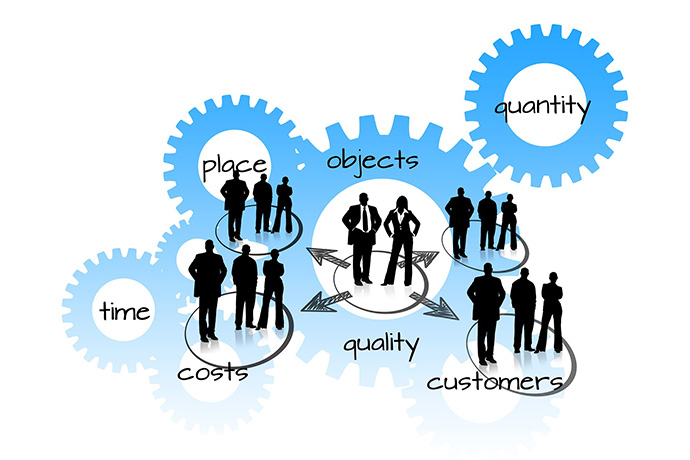When you get caught up in the routine of running a business, you can find it hard to see where change and development are required. You can find it difficult to see where you can trim the excess and improve what you are offering and doing. Investing your time in change and development and focusing on all areas of your business will help you streamline your business and make it more competitive than ever.
Being on board with change and improvement
Before jumping in and changing lots at once, you need to make sure you (and everyone else) are on board with change and improvement. If there is a reluctance to change, then you need to eradicate this first. As a leader, you need to lead by example. You need to show employees and team members just how beneficial streamlining and change are. You have to reiterate how it will help to future-proof your business. When you have the right approach and mindset, you will find that change will be easily adopted.
Top Tip: You may face challenges and pushback from staff or employees within your business, especially if the forecasted change and improvement work impacts them. Learning to tackle problems and issues head-on and listening to what feedback employees give you will help you all work amicably towards a resolution.
Looking at the supply chain
Now that you have everyone on board with change and improvement, it is time to start looking at the supply chain you have in place. When you streamline your supply chain process, you see where you can save time and money. You may not have changed the supply chain for a while, and your operations may be slow, ineffective, and inefficient. The sooner you look at your supply chain, the sooner you can begin to make changes and improvements. When you are looking at the supply chain, you must see how relevant each stage is. Strip back the processes and operations in place. Monitor them and see if you are getting the most out of each process or function. Make sure that they are highly relevant and see if they can be removed or slimmed down.
Top Tip: Try and look at the supply chain from the perspective of an outsider to the business. Don’t look at the supply chain through your eyes; look at it through the eyes of an investor (or an employee).
Change one or two key areas at a time
When you start stripping back the supply chain, you may well find that there are many areas you want to change or improve. This can be overwhelming for any business or leader. To ensure you focus your efforts on the right areas, you must focus on one or two key areas for change. Trying to change too much can lead to chaos, and it most certainly will lead to confusion.
Top Tip: Prioritize where you need to focus your efforts and investment, do not try and spread your efforts too thinly on the ground. If you do this, you may end up with processes that are lengthier or even costlier.
Investing in streamlining
To get the best results when streamlining you have to be prepared to invest. If you are not investing in saving money or in saving time, then you are setting yourself up for disappointment. Creating an investment budget and even giving yourself a contingency fund will be crucial to your efforts. Cutting back on processes and operations, making improvements, and even integrating new technology and approaches will take a significant investment. It is therefore important to remember that you often must invest money to save money.
Top Tip: Look at the return you expect to achieve through streamlining before investing. Ensure you are getting a good return on your spending and investment.
Evaluate what is working well
As you start making changes, it is important that you place emphasis on evaluation and monitoring. Regularly evaluate which processes and operations are working well. If there is a fall or a lapse in how effective a process is, then look at how it can be altered (or even removed). Do not wait until you have an annual review of the supply chain. Instead, commit to regular quarterly evaluations because this way, you can make swift and sharp changes. Periods of evaluation allow you also to see if anything new can be added to increase efficiency and effectiveness. You can aim to evaluate at least once every 3-4 months if the logistics allow.
Top Tip: To speed up the process of evaluation, you may want to use a template. A go-to template that can be used every quarter or every half can help you see results and data quickly. This can then be easily compared to previous results and findings.
Integrating new technology
Operations can often be streamlined with the integration of new technology. Being prepared to invest in new technology and ensuring that it is compatible with your current operating systems is essential. New technology can reduce the need for an extra employee, or it can cut out two or three stages (or processes). When you are looking at integrating new technology always seek expertise, advice, and guidance. If technology is not compatible, it can be costly and timely to rectify.
Top Tip: What new technology have your competitors embraced? Are they early adopters of new technology, and do you have the chance to follow their lead?
Looking at automation
Your business processes and operations may benefit from being automated. Look at opportunities for automation, and see how automation would fit into your current approach to operations. You may find that new software could monitor and evaluate the supply chain you are creating. Or you could find that automation can handle and correlate data every day – meaning you must rely less on employees.
Top Tip: Automation can be great but remember that it still needs to be monitored to ensure effectiveness.

